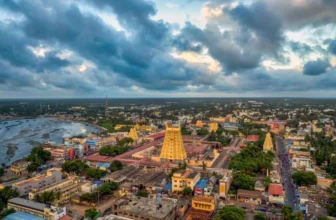🌿 Kansa Wand: The Forgotten Bronze Tool of Indian Healing
Introduction
In the heart of ancient India, long before modern physiotherapy or dermatology, there was a small, bell-shaped bronze tool used to balance energy, enhance skin health, and calm the nervous system. Known as the Kansa Wand, this unassuming instrument has been part of Ayurvedic healing practices for over 5,000 years.
But what exactly is the Kansa Wand, and does science support its healing claims? Let’s dive deep into this uniquely Indian blend of metallurgy, massage, and mindfulness.
🪔 What Is a Kansa Wand?
The Kansa Wand is a dome-shaped massage tool made from a special blend of copper and tin—commonly known as kansa or bronze. It’s attached to a wooden handle and used to gently massage the face, feet, and body in circular or sweeping motions.
The practice is often referred to as “Kansa Therapy” and is a part of Ayurvedic facial and foot massage traditions.
📖 Cultural and Historical Roots
- Kansa is considered the “healing metal” in Ayurveda and is believed to balance the body’s doshas (Vata, Pitta, Kapha).
- In ancient times, kansa utensils were used for eating and drinking due to their believed detoxifying properties.
- The Kansa Wand is often used with herbal oils, especially in rituals related to Marma therapy—an Ayurvedic form of acupressure focusing on vital energy points.
🔬 The Science Behind Kansa
While rooted in tradition, Kansa Wand therapy is now attracting global attention—and modern research is beginning to back some of its benefits.
1. Metal Ion Interaction
- The Kansa alloy (copper and tin) can react slightly with the skin’s acidity. Some users notice a greying effect during massage, which practitioners interpret as an indication of excess acidic buildup or toxins on the skin.
- Copper is known for its antimicrobial and anti-inflammatory properties. Though topical absorption is minimal, contact with copper surfaces may help maintain skin hygiene and reduce microbial load.
2. Lymphatic Drainage and Detoxification
- Gentle kansa massage stimulates the lymphatic system, helping to move stagnant fluid and toxins out of tissues.
- This results in reduced puffiness, improved circulation, and a more relaxed facial appearance—a natural, non-invasive rejuvenation method.
3. Nervous System Calming
- Foot massages with the Kansa Wand are especially revered in Ayurvedic wellness. They stimulate Marma points and nerve endings, promoting:
- Better sleep
- Reduced stress and anxiety
- Relief from eye strain, headaches, and general fatigue
A study on reflexology and Ayurvedic massage showed that such stimulation can lead to a measurable drop in cortisol levels and an increase in parasympathetic nervous system activity.
🧘 Modern Revival and Global Appeal
With the rise of natural skincare and holistic wellness, the Kansa Wand is being rediscovered:
- Spas and wellness retreats across India and abroad now offer Kansa facials.
- Beauty experts are praising it as a gentler alternative to tools like jade rollers or gua sha.
- Its combination of detoxification, grounding, and skin toning makes it a unique tool in both traditional and modern skincare routines.
⚖️ How It Differs from Other Massage Tools
| Tool | Origin | Material | Focus |
|---|---|---|---|
| Kansa Wand | India | Bronze (copper + tin) | Detox, balance, calming |
| Gua Sha | China | Jade/stone | Lymphatic drainage, contouring |
| Jade Roller | China | Jade | Cooling, puff reduction |
| Acupressure Mat | Worldwide | Fabric + spikes | Pain relief, stimulation |
Unlike other tools, the Kansa Wand integrates metal ion benefits with energy balancing, deeply tied to Ayurvedic philosophy.
🧭 A Gentle Touch with Ancient Wisdom
The Kansa Wand is more than just a facial tool—it’s a living symbol of India’s ancient approach to healing, where metal meets energy, and touch meets science. In a time when we seek natural, calming ways to care for our body and mind, this 5,000-year-old practice offers a gentle, effective reminder: sometimes, healing begins with the simplest tools.










